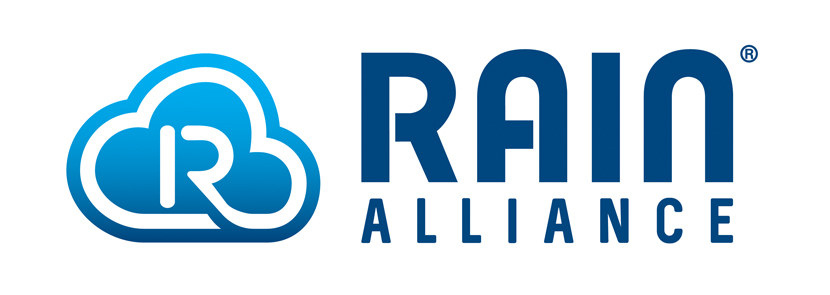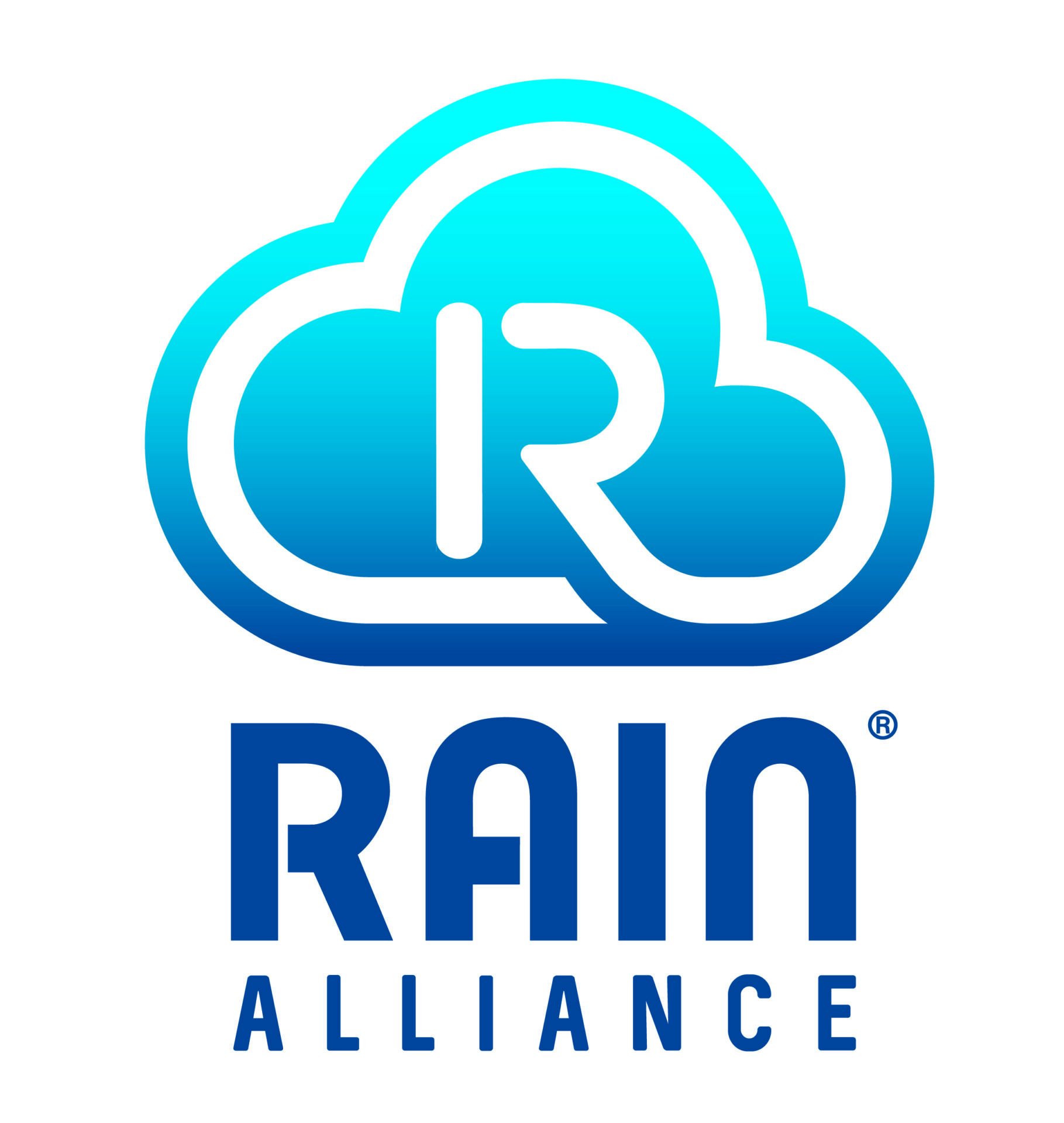The term RAIN refers to a standards-based, wireless communication technology that enables the identification, location, authentication, and engagement of items where both the tags and readers implement the ISO/IEC 18000-63 protocol, and the tags are encoded using controlled numbering practices, either following applicable ISO standards or the GS1 EPC TDS.
To support the global adoption and consistent use of this technology, the RAIN Alliance—a non-profit industry organization—has developed this guide to clarify the proper use of RAIN terminology and logos.
This page has two sections:
- RAIN (the technology): Guidelines for using the term “RAIN” to describe products, solutions, and capabilities based on the ISO/IEC 18000-63 (GS1 UHF Gen2) protocol.
- RAIN Alliance (the organization): Guidance on referencing the Alliance, including proper use of the RAIN Alliance name and branding.
By following these guidelines, you’ll help improve market clarity, reinforce the value of RAIN technology, and support the growth of the ecosystem.
RAIN — The Technology
RAIN (an acronym derived from RAdio IdentificatioN), is the term chosen by the industry to describe a standards-based, wireless communication technology operating in the UHF range (between 860 and 930 MHz) with a typical range of many meters. RAIN technology utilizes the ISO/IEC 18000-63 air-interface protocol (also known as GS1 UHF Gen2).
As the fastest-growing segment of the RFID market, with hundreds of billions of tag ICs sold to date, RAIN is used in many markets and industries worldwide to identify, locate, authenticate, and engage items–providing numerous benefits to end users. While other IoT technologies bring other capabilities and values, none can match RAIN for cost, simplicity, and availability.
The RAIN name is not a proprietary trade name or a trademark, and the use of the RAIN name and emblems allows a business, its products, solutions, and capabilities to be associated with this rapidly growing market. The RAIN name provides a clear identifier that helps people clarify and differentiate it from other IoT technologies. It reduces confusion and provides a mechanism for creating industry awareness of and education about the core capabilities and value of the technology, allowing businesses to focus on selling.
Usage Guidelines
These guidelines detail the proper industry use of the technology product identifier “RAIN” in content and imagery. This includes establishing its correct usage in documents and online. The guide also includes standard RAIN definitions, descriptors, and emblems that can be used by anyone.
RAIN should be used and/or replace all relevant references to RFID, UHF RFID, passive RFID, passive UHF RFID, and EPC RFID in an organization’s technical, sales, and marketing materials. The proper use of RAIN in this way will improve market clarity and end-user understanding of the technology and its benefits. Much like the term “Wi-Fi” has simplified the way we talk about the technology used for unplugged internet access, and the term “Bluetooth” has simplified the way we talk about exchanging data with a mobile device, the term RAIN simplifies the way we talk about enabling visibility into the trillions of things in our world.
RAIN Technology Terminology Usage
WHY USE THE TERM “RAIN”: RAIN is the term chosen by the industry to describe a standards-based, wireless communication technology that uses the ISO/IEC 18000-63 protocol (also known as GS1 UHF Gen2). Using consistent terminology – RAIN – eliminates confusion and clarifies for the end-user the technology’s capabilities and applications. It acts as a “short cut” for people to understand what is being discussed.
WHEN TO USE THE TERM “RAIN”: Use RAIN in place of other phrases like RFID, UHF RFID, passive RFID, passive UHF RFID, EPC RFID. The RAIN name can be used by itself.
Examples of How to use the term “RAIN”
WHERE TO USE THE TERM “RAIN”: Use RAIN in content such as advertisements, blogs, case studies, data sheets, ebooks, emails, infographics, podcasts, presentations, press releases, reports, social media, solution briefs, videos, white papers, etc. Standard language describing RAIN technology is below and available for your use. The term “RAIN” can be used to identify a variety of things, including:
- RAIN tags
- RAIN readers
- RAIN solutions
- RAIN applications
- RAIN technology
RAIN Technology Definition
This definition can be used in its entirety to describe RAIN technology. Simply copy and paste the following into whatever document you are working on.
A RAIN system is a standards-based, wireless system where the tags and readers both implement the RAIN air-interface protocol (ISO/IEC 18000-63 also known as GS1 UHF Gen2) and the tags are encoded utilizing controlled numbering practices either following applicable ISO standards or the GS1 EPC TDS.
RAIN Technology Descriptor
This descriptor can be used when a longer definition or more background about RAIN is needed. This descriptor can be used in its entirety. Simply copy and paste the descriptor into whatever document you are working on.
RAIN is one of the most pervasive technologies in the world and is used in many markets for efficient identification, localization, and authentication of products. While other IoT technologies bring other values, none can match RAIN for cost, simplicity, and availability. So, it’s no surprise that the RAIN market is the fastest-growing segment with hundreds of billions of RAIN tags sold. A RAIN system is a standards-based, wireless system where the tags and readers both implement the RAIN air-interface protocol (ISO/IEC 18000-63, also known as GS1 UHF Gen2) and the tags are encoded utilizing controlled numbering practices either following applicable ISO standards or the GS1 EPC TDS. The RAIN name provides a clear and simple identifier for the wide variety of products and services that comply with the relevant standards.
“About RAIN” Paragraph
For use when an “About” paragraph or background information on the RAIN technology is needed. This “About” paragraph can be used in its entirety. Simply copy and paste the paragraph into whatever document you are working on.
RAIN is the name for the standards-based, wireless system where the tags and readers both implement the RAIN air-interface protocol (ISO/IEC 18000-63, also known as GS1 UHF Gen2) and the tags are encoded utilizing controlled numbering practices either following applicable ISO standards or the GS1 EPC TDS. It is the fastest growing type of RFID available today.
RAIN Emblems
The RAIN Alliance established the RAIN emblems to help companies and end-users, as well as commercial users and consumers, visually identify RAIN products.
The RAIN emblem can be placed on products to indicate the presence of the technology. ISO/IEC 29160 proposes using the RAIN emblem as a means of informing the public about the use of RAIN in consumer and workplace environments. The RAIN Alliance encourages the use of the RAIN emblem in these instances to help end users and consumers become familiar and comfortable with the use of the technology.
While the term “RAIN” is not a proprietary trade name or a trademark, the “RAIN” emblem is a mark owned by the RAIN Alliance (in a similar way to the NFC and Bluetooth logos are owned by the relevant associations linked with those technologies). Available at no charge to members and non-members of the RAIN Alliance alike, the RAIN technology emblem can be used to connect customers with the RAIN technology embedded in your product. If you intend to use the mark in your product(s), please complete this licensing agreement.
Useage of the RAIN Emblem
The RAIN technology emblem should be sized appropriately for the material on which it appears. An appropriate emblem size maintains the emblem’s ratio and provides an appropriate amount of white space around the emblem. Do not stretch or distort the emblem in any way. The emblem should never “touch” another emblem or text element.
Contact the RAIN Alliance if you have any questions – info@therainalliance.org.
RAIN Alliance – The Organization
The RAIN Alliance is a neutral, not-for-profit consortium of companies that together want to create a smarter and more sustainable world by using RAIN technology to connect trillions of everyday items across their entire lifecycle, simply and inexpensively.
We promote the universal adoption of RAIN technology in a way similar to how other wireless technology organizations, including NFC Forum, WiFi Alliance, and Bluetooth SIG, promote their respective technologies.
Here are guidelines for referencing the RAIN Alliance, including proper use of the RAIN Alliance name and branding.
RAIN Alliance Definition
For use when a description of the RAIN Alliance is required. This definition can be used in its entirety. Simply copy and paste into whatever document you are working on.
The RAIN Alliance is a neutral, not-for-profit industry organization supporting the universal adoption of RAIN, a wireless technology that connects billions of everyday items to the Internet of Things, enabling businesses and consumers to identify, locate, authenticate, and engage assets. For more information or to join the non-profit organization, visit: therainalliance.org
RAIN Alliance Logos


Anyone can download and use the RAIN Alliance logos on marketing materials and websites.
Download Horizontal RAIN Alliance Logo
Download Vertical RAIN Alliance Logo
RAIN Alliance Logo Size Guidelines
The RAIN Alliance logo should be sized appropriately for the material on which it appears. An appropriate logo size maintains the logo’s ratio and provides an appropriate amount of white space around the logo. Do not stretch or distort the logo in any way. The logo should never “touch” another logo or text element.
Horizontal alignment: When horizontally aligning the RAIN Alliance logo with other corporate logos (as in a sponsorship block), make sure the base of the RAINAlliance logo aligns with the base of the other logos.
Vertical alignment: When vertically aligning the RAIN Alliance logo with other corporate logos (as in a list of sponsors), either center the logos or align the RAIN Alliance with the left edge of the other logos.
Contact the RAIN Alliance if you have any questions – info@therainalliance.org.


